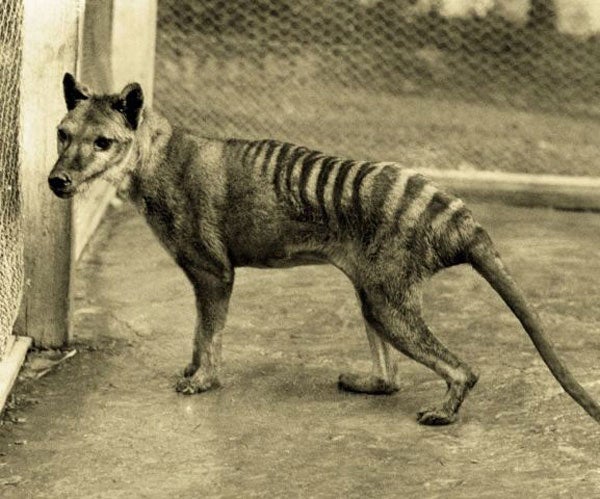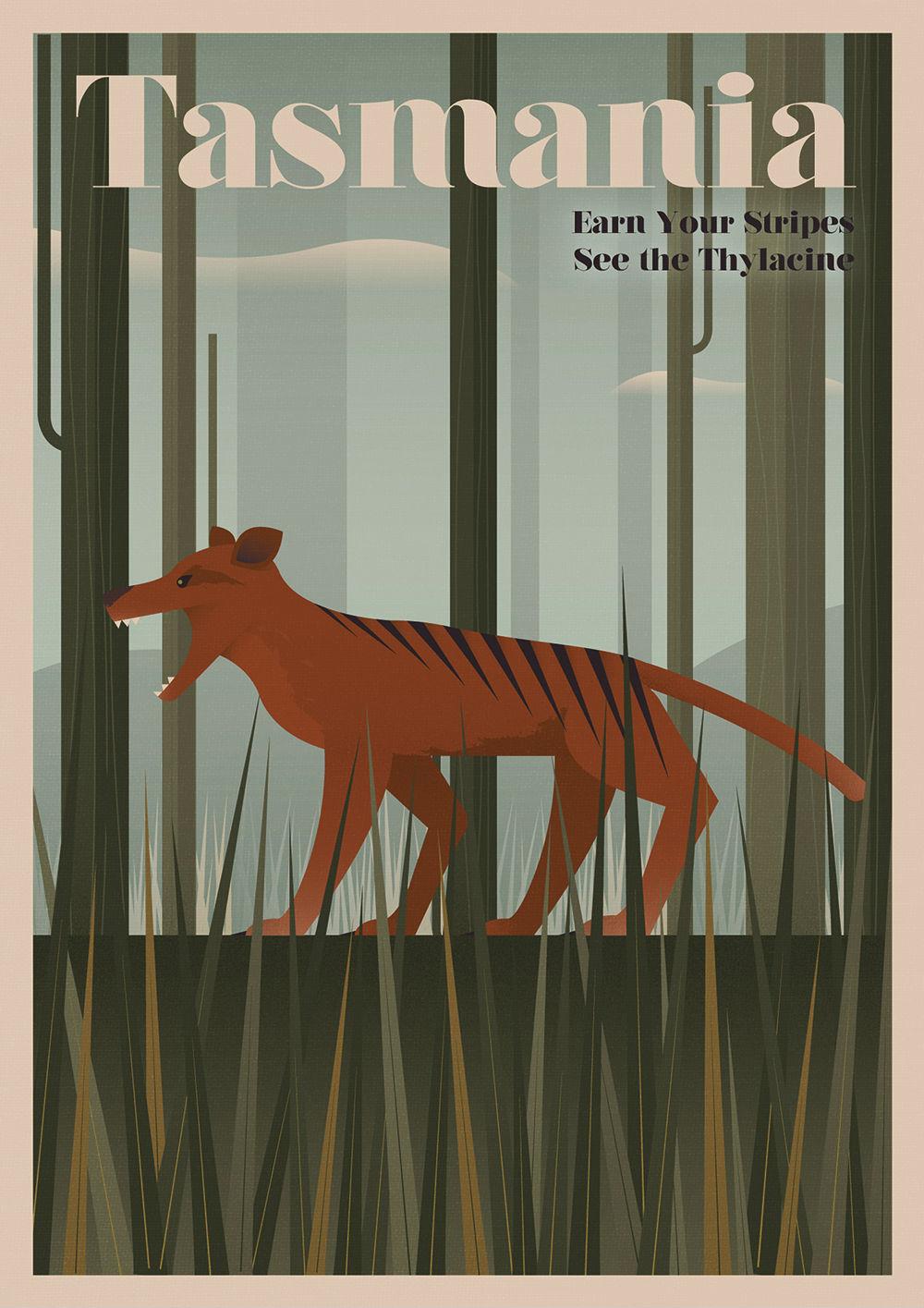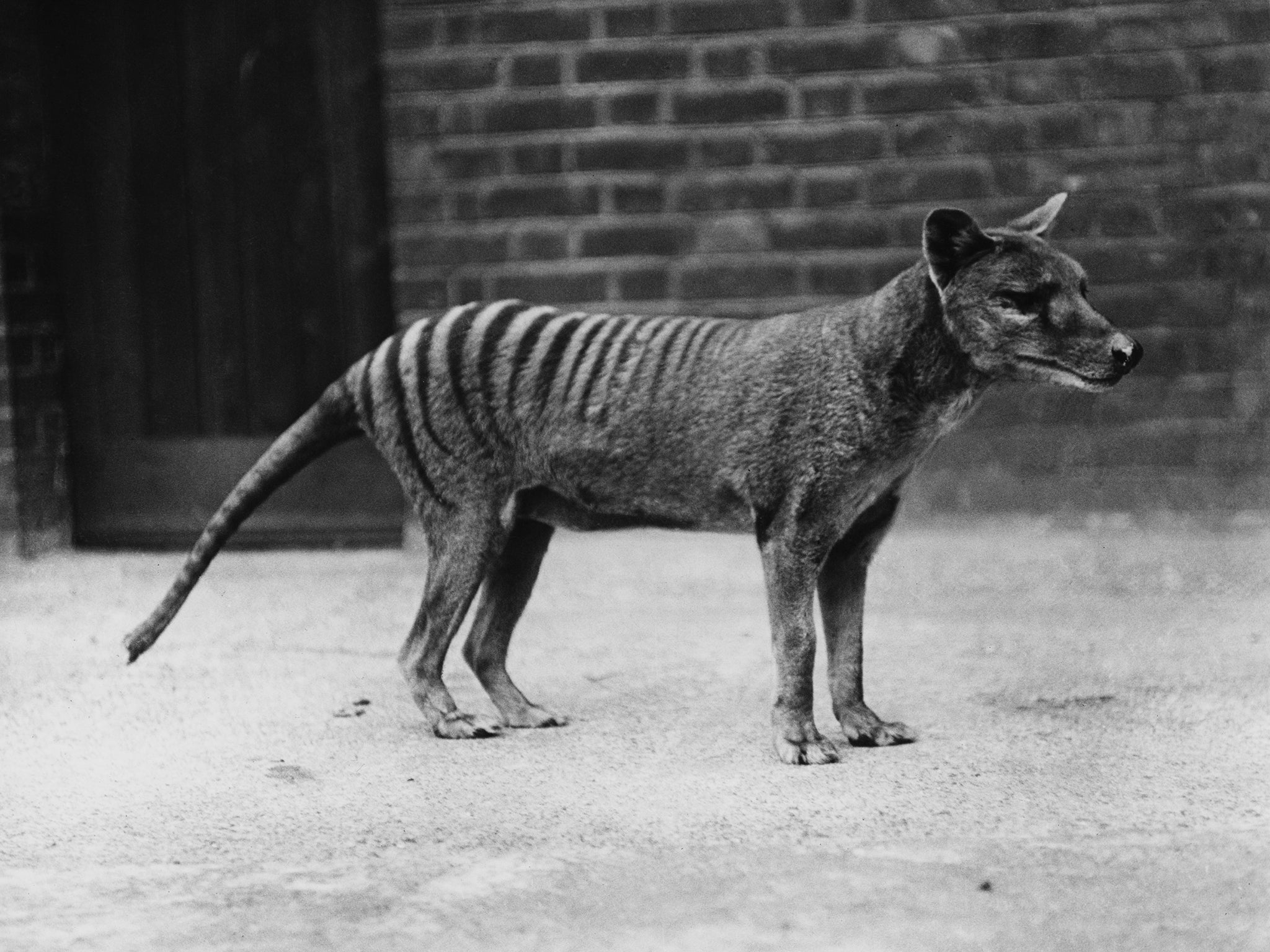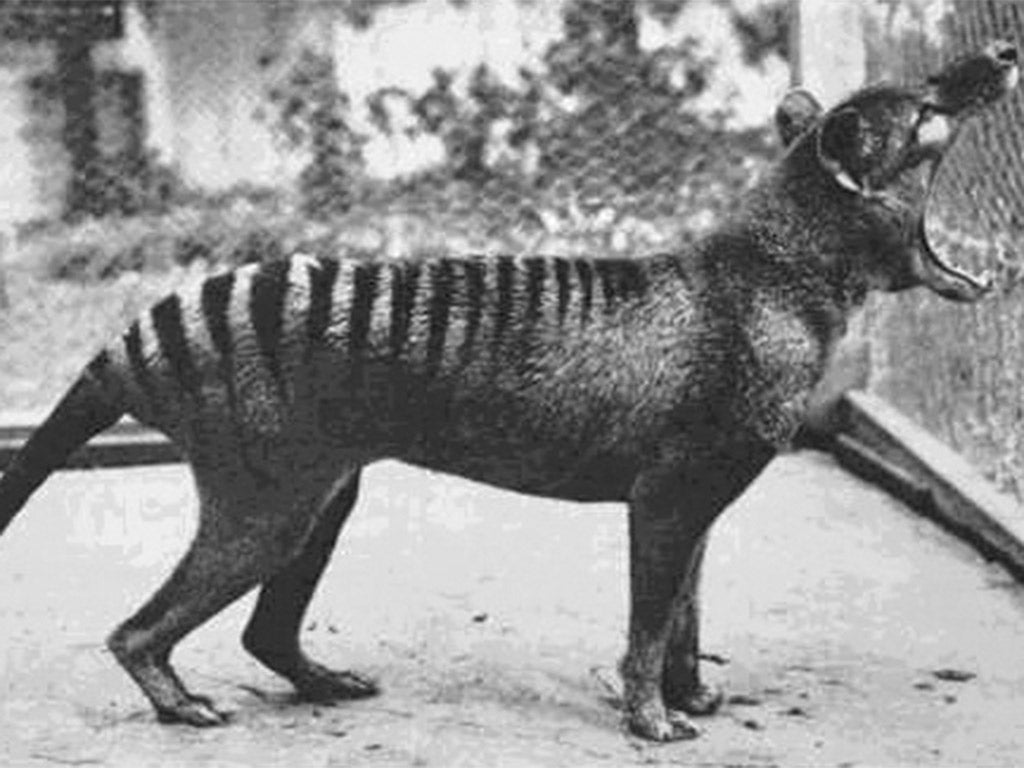Tasmanian tiger: 'Sightings' of extinct animal spark hunt in Australia
Carnivore hunted to extinction by European settlers may have survived in isolated wilderness area, if sightings by park ranger and tour guide are genuine

Your support helps us to tell the story
From reproductive rights to climate change to Big Tech, The Independent is on the ground when the story is developing. Whether it's investigating the financials of Elon Musk's pro-Trump PAC or producing our latest documentary, 'The A Word', which shines a light on the American women fighting for reproductive rights, we know how important it is to parse out the facts from the messaging.
At such a critical moment in US history, we need reporters on the ground. Your donation allows us to keep sending journalists to speak to both sides of the story.
The Independent is trusted by Americans across the entire political spectrum. And unlike many other quality news outlets, we choose not to lock Americans out of our reporting and analysis with paywalls. We believe quality journalism should be available to everyone, paid for by those who can afford it.
Your support makes all the difference.Apparent sightings of the Tasmanian tiger in northern Australia have sparked a search for the long-extinct carnivore.
The wolf-like predators were the largest known carnivorous marsupial to have existed alongside human society, but the last known specimen died in a zoo on the island of Tasmania itself in 1936.
However, based on eyewitness evidence provided by a tourism operator and a former park ranger, 50 camera traps will be set up across the Cape York Peninsula in the hope of finding a surviving population.

Professor Bill Laurance will be heading the survey, which will take place across remote locations in Australia's largest wilderness area.
He told the Telegraph: “All observations of putative thylacines to date have been at night, and in one case four animals were observed at close range, about 20 feet away, with a spotlight.
“We have cross-checked the descriptions we received of eye shine colour, body size and shape, animal behaviour, and other attributes, and these are inconsistent with known attributes of other large-bodied species in north Queensland such as dingoes, wild dogs or feral pigs.”
Sightings of the 30 kilogram carnivore properly known as the thylacine are common, but are generally written off as cases of mistaken identity. Feral cats and dogs are the most common lookalikes.

But the two latest observations, whose exact location is being kept a secret by the researchers, are considered plausible. Patrick Shears, a qualified ranger, added that Aboriginal locals also reported sightings of the beast.
"They call it the 'moonlight tiger'," he told the Telegraph. "They're curious. If you're not moving and not making a noise they'll come within a reasonable range and check you out then just trot off.”
The thylacine was not actually related to Western carnivorous dogs or cats, but evolved its teeth, claws and characteristic striped back in isolation.

It is depicted in Aboriginal rock art from at least 3,000 years ago. However, by the time Western explorers arrived in the Australian continent it was extinct on the mainland and increasingly rare in Tasmania itself, losing out in competition with dingos and human hunters.
Bounties worth £100 a head in today's money fuelled an intensive hunting drive, while diseases and dogs imported from Europe further contributed to its apparent obliteration from Tasmania.
Since the last captive thylacine died, there have been nearly 4000 reported sightings on mainland Australian soil. Tasmanian tour operator Stuart Malcolm has offered an A$1.75 million (£1 million) reward for proof the thylacine has survived to the present day.
However, professor Laurance and his team are not expecting to claim any reward, emphasising that the chances of any tigers surviving on the Australian mainland remain very slim.
Join our commenting forum
Join thought-provoking conversations, follow other Independent readers and see their replies
Comments